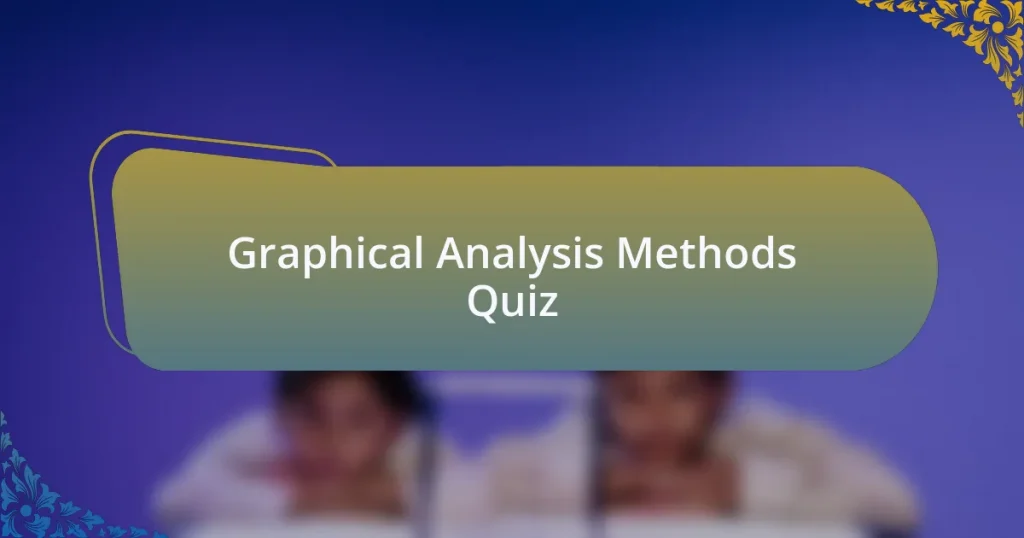Start of Graphical Analysis Methods Quiz
1. What is the primary purpose of a bar graph in graphical analysis?
- To compare categorical data.
- To illustrate complex equations.
- To show trends over time.
- To represent continuous data.
2. What does a line graph typically represent in physics contexts?
- Static measurements at one point.
- Trends over time or across categories.
- Only categorical comparisons.
- Random scatter of data points.
3. How can you determine principal stresses using graphical methods?
- By calculating eigenvalues from stress tensors.
- By drawing Mohr’s circle and identifying the points where the circle intersects the axes.
- By analyzing stress distributions with a finite element model.
- By using the Pythagorean theorem to compute stress values.
4. What are the primary stress invariants calculated during graphical analysis?
- \(J_1, J_2, J_3\)
- \(P_1, P_2, P_3\)
- \(R_1, R_2, R_3\)
- \(M_1, M_2, M_3\)
5. What indicates a radius of zero in Mohr`s circle analysis?
- Infinity
- One
- Zero
- Negative One
6. How do you interpret the data presented in a pie chart?
- By adding the numerical values of all slices together.
- By calculating the average of the values in the chart.
- By comparing each slice to the largest slice only.
- By identifying the proportion of each category represented by the size of each slice.
7. What does a curved line on a distance/time graph indicate about motion?
- Decreasing speed.
- Constant acceleration.
- Constant speed.
- No movement.
8. What is the primary purpose of a scatter plot in graphical analysis?
- To display a single variable`s frequency distribution.
- To summarize data into categories and totals.
- To show the relationship between two variables.
- To illustrate a trend over time in a linear format.
9. How is the optimal solution identified through graphical sensitivity analysis?
- By calculating the average of all points in the feasible region.
- By plotting the iso-profit line and identifying the intersection point within the feasible region.
- By rearranging the equation of the line to find the slope accurately.
- By applying statistical analysis to appraise extreme points in the graph.
10. What features define a valid representation of Mohr`s circle in stress analysis?
- The representation does not require any labeling or scales.
- The circles must be drawn only in the first quadrant of the coordinate plane.
- Mohr’s circle can only be used for two-dimensional stress states.
- The center of each circle is indicated by O, and it represents the normal and shear stresses on an oblique plane.
11. What is a key characteristic of a valid graphical representation of data?
- Irrelevant data that does not represent key information.
- Random colors and shapes with no labels.
- Unlabeled axes with inconsistent scales.
- Clear labeling, accurate scales, and relevant data points.
12. How do you calculate and interpret stress invariants in three-dimensional stress analysis?
- Using the formulas \(J_1=σ_x+σ_y+σ_z\), \(J_2=σ_xσ_y+σ_yσ_z+σ_zσ_x-\tau_{xy}^2-\tau_{yz}^2-\tau_{xz}^2\), and \(J_3=σ_xσ_yσ_z+2\tau_{xy}\tau_{yz}\tau_{xz}-σ_x\tau_{yz}^2-σ_y\tau_{xz}^2-σ_z\tau_{xy}^2\).
- By adding all the external loads acting on the body.
- By measuring only the maximum shear stress present.
- By averaging the stresses on all planes in the body.
13. What is the role of Mohr`s circle in visualizing shear stresses?
- Mohr`s circle visualizes energy levels in atomic structures.
- Mohr`s circle is used to determine the density of materials.
- Mohr`s circle measures the speed of sound in different media.
- Mohr`s circle helps visualize and calculate the normal and shear stresses on an oblique plane.
14. How does the first constraint affect sensitivity analysis in graphical contexts?
- The first constraint is irrelevant to the sensitivity of the analysis in graphical contexts.
- The first constraint limits the types of graphical methods that can be used.
- The first constraint determines the lower limit of the right-hand side value for the constraint to remain feasible.
- The first constraint defines the maximum value of the variables in the optimization process.
15. What types of data are best visualized with a bar chart?
- Ordinal data.
- Numerical data.
- Continuous data.
- Categorical data.
16. What significant information can be derived from the center of Mohr`s circle?
- The average normal stress and shear stress on an oblique plane.
- The total stress at a point in a material.
- The maximum shear stress only.
- The minimum normal stress value.
17. How can you analyze a scatter plot to derive conclusions about relationships between variables?
- Identify the highest and lowest data points only.
- Count the number of data points present on the plot.
- Look for patterns and trends in the data points.
- Measure the distances between all points on the plot.
18. How many extreme points typically represent basic feasible solutions in linear programming?
- 4
- 8
- 2
- 6
19. What does a scatter plot reveal about the correlation of data?
- The frequency of data points in a set.
- The total sum of the data points.
- The exact values of each data point.
- The strength of the correlation between two variables.
20. In what context is a curved line present on a distance/time graph?
- Uniform speed
- Instantaneous velocity
- Constant acceleration
- Fixed distance
21. How does graphical representation aid in understanding phenomena in physics?
- Graphical representation only attracts attention without aid.
- Graphical representation complicates understanding of physics.
- Graphical representation helps visualize complex data relationships.
- Graphical representation provides inaccurate data interpretation.
22. What defines the intersection point in sensitivity analysis for optimal solutions?
- The optimal constraint`s shadow price
- The feasible region boundary
- The intersection of the x-axis
- The direction of steepest ascent
23. How do you determine the normal and shear stresses on oblique planes using Mohr’s circle?
- By calculating normal stress without considering the angles.
- By applying a linear equation to find shear and normal stresses.
- By using only the shear stress formula directly without visualization.
- By drawing Mohr’s circle and identifying the stress points on the diagram.
24. What is the significance of graphical analysis in contemporary physics education?
- It is an outdated method with little relevance to modern physics.
- It complicates the understanding of physical concepts and theories.
- It only serves artistic purposes in science education.
- It helps students visualize complex relationships and data trends.
25. How might the nature of data influence the choice of a pie chart versus a bar graph?
- Bar graphs show proportions of a whole effectively.
- A bar graph is always better for time data.
- A pie chart is best for showing parts of a whole.
- Pie charts are used for displaying continuous data only.
26. Why are error bars important in graphical data representations?
- They are used to embellish graphs.
- They show the highest value only.
- They represent the average value.
- They indicate the variability of the data.
27. What is the connection between graphical analysis and real-world physics applications?
- Graphical analysis only applies to mathematical theories, not physical phenomena.
- Graphical analysis is solely about data collection and not interpretation.
- Graphical analysis helps visualize complex physical concepts for better understanding.
- Graphical analysis has no practical applications in physics at all.
28. How do axis scales impact the interpretation of a line graph?
- Axis scales have no impact on the interpretation of the graph.
- Axis scales determine the type of data displayed in the graph.
- Axis scales only affect the units shown on the graph.
- Axis scales can change the perceived slope of the graph.
29. What are the benefits of using a scatter plot over a line graph for certain datasets?
- Line graphs are better for showing all data points.
- Line graphs are always easier to read.
- Scatter plots can effectively display correlations.
- Scatter plots only show averages of data points.
30. In the context of graphical methods, what does `sensitivity` refer to?
- It measures the physical strength of materials in a graph.
- It refers to the responsiveness of a graph to changes in data.
- It indicates the number of data points represented in a graph.
- It describes the aesthetic quality of a graph`s visuals.
Quiz Completed Successfully!
Congratulations on completing the quiz on Graphical Analysis Methods! You’ve taken an important step in your Physics Test Preparation journey. Engaging with these questions helps reinforce your understanding of key concepts. You likely gained insights into how graphs can depict physical phenomena clearly and concisely.
Through this quiz, you may have learned the importance of interpreting data visually. Understanding slopes, areas under curves, and trends can provide meaningful information about physical relationships. These skills are essential for analyzing experimental data and making informed conclusions.
We invite you to dive deeper into the topic of Graphical Analysis Methods. In the next section on this page, you’ll find more information that can expand your knowledge further. Explore additional resources, examples, and applications to strengthen your skills. Happy studying!
Graphical Analysis Methods
Understanding Graphical Analysis Methods in Physics
Graphical analysis methods involve visual representations of data to interpret physical phenomena. These methods include plotting graphs to understand relationships between variables, such as position, velocity, and acceleration. Utilizing graphs simplifies complex data, making it easier to identify trends and patterns. For instance, a position-time graph can indicate velocity by showing the slope of the line. This understanding is essential for physics test preparation as it reinforces conceptual comprehension through visualization.
Common Graph Types Used in Physics Analysis
Various graph types are integral to graphical analysis in physics. Line graphs display continuous data trends, while bar graphs compare different sets of data. Scatter plots are useful for illustrating correlations between two variables. Each graph type serves a specific purpose, enabling students to analyze experimental data effectively. For physics tests, familiarity with these graph types enhances problem-solving skills, particularly in topics like kinematics and thermodynamics.
Data Interpretation Skills Through Graphs
Data interpretation is crucial in physics, focusing on extracting meaningful insights from graphical representations. Students must learn to analyze slopes, intercepts, and areas under curves. For example, the slope of a velocity-time graph indicates acceleration. Mastering these skills aids in solving numerical problems and understanding physical concepts. Strong data interpretation directly correlates with improved performance in physics assessments.
Graphical Analysis in Experimental Physics
In experimental physics, graphical analysis helps evaluate and present findings. Students often conduct experiments and collect data, which they then graph to derive conclusions. This method underscores the importance of accuracy in data collection, as graphing faulty data can lead to incorrect interpretations. Mastery of graphical analysis in an experimental context is crucial for success in lab practicals and theoretical examinations alike.
Integrating Graphical Analysis into Test Strategy
Integrating graphical analysis into test strategies enhances physics exam performance. Students should practice sketching and interpreting graphs for various problems. This preparation aids in quick visualization during tests, leading to more efficient problem-solving. Additionally, understanding graphs can provide immediate insights into questions, particularly multiple-choice formats. By incorporating this method into their study routines, students can significantly improve their test outcomes.
What are Graphical Analysis Methods in Physics?
Graphical analysis methods in physics are techniques that use visual representations of data to interpret and analyze physical phenomena. These methods involve plotting data on graphs to identify trends, relationships, and patterns. Common examples include scatter plots, line graphs, and histograms. They allow for easy comparison of variables, facilitating the understanding of concepts such as motion, forces, and energy. Graphical analysis is widely used in experiments and simulations, aiding in the validation of theoretical models.
How do Graphical Analysis Methods aid in Physics Test Preparation?
Graphical analysis methods aid in physics test preparation by enabling students to visualize data and relationships between concepts. They help in understanding complex principles, such as kinematics and dynamics, through graphical representations. For example, distance-time graphs can illustrate motion clearly, making it easier for students to grasp velocity and acceleration. Practicing with these graphs improves critical thinking and analytical skills, which are essential for solving physics problems effectively during tests.
Where can students practice Graphical Analysis Methods for Physics?
Students can practice graphical analysis methods for physics in various settings, including classrooms, laboratories, and online platforms. Many educational websites and platforms provide interactive simulations that allow for hands-on experience with graphing data. Resources like PhET Interactive Simulations and educational physics apps are excellent for refining graphical analysis skills. Additionally, school textbooks often include problems that require graphing and analysis as part of their practice exercises.
When should students focus on Graphical Analysis Methods in their studies?
Students should focus on graphical analysis methods throughout their physics studies, particularly during the understanding of key topics like motion, forces, and energy. It becomes especially important when preparing for exams. Incorporating these methods early on allows students to build a strong foundational skill set. Regular practice before tests and quizzes enhances retention and application of concepts conveyed through graphical representations.
Who benefits from learning Graphical Analysis Methods in Physics?
Students at all levels of physics education benefit from learning graphical analysis methods. High school students preparing for standardized tests gain clarity in understanding relationships among variables. College students conducting experiments or coursework utilize these methods to analyze data more effectively. Additionally, educators benefit by using these methods to teach complex concepts visually, facilitating deeper student engagement and understanding. Graphical analysis is a vital skill for anyone pursuing a career in STEM fields.















